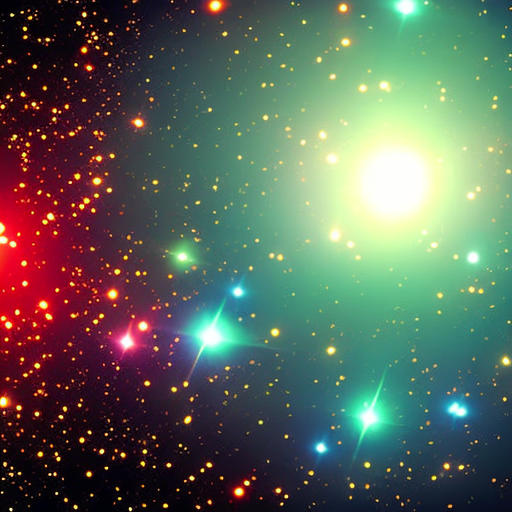Summary:
Star formation is the process by which dense regions within molecular clouds in interstellar space collapse under their own gravity, leading to the formation of new stars. This process involves several stages, including the fragmentation of molecular clouds, the collapse of these fragments, and the subsequent formation of protostars. The study of star formation is crucial for understanding the formation and evolution of galaxies, as stars are the building blocks of galaxies.
Fragmentation of Molecular Clouds:
Star formation begins with the fragmentation of molecular clouds, which are dense regions of gas and dust in interstellar space. These clouds are primarily composed of molecular hydrogen (H2) and are often several light-years in size. Various physical processes, such as turbulence, magnetic fields, and shock waves, can trigger the fragmentation of these clouds into smaller clumps or cores. These cores are the initial sites where stars will eventually form.
Collapse of Fragments:
Once a molecular cloud fragment or core forms, it begins to collapse under its own gravity. As the core collapses, it becomes denser and hotter, leading to the formation of a protostar. The collapse is facilitated by the release of gravitational potential energy, which heats up the core and increases its internal pressure. This process is known as gravitational contraction.
Protostar Formation:
As the core continues to collapse, it forms a protostar, which is a young, pre-main-sequence star. The protostar is surrounded by a rotating disk of gas and dust, known as a protoplanetary disk. The material in this disk can eventually coalesce to form planets and other objects in a star system. The protostar continues to accrete mass from the surrounding disk, growing in size and luminosity.
Protostellar Evolution:
During the protostellar phase, the young star undergoes significant changes. As it accretes mass, the protostar’s luminosity increases, and it emits strong stellar winds and jets. These outflows help to remove angular momentum from the system and regulate the accretion process. Eventually, the protostar reaches a state of hydrostatic equilibrium, where the inward force of gravity is balanced by the outward pressure from nuclear fusion in its core.
Star Formation Rate:
The rate at which stars form in a galaxy is known as the star formation rate (SFR). It is an essential parameter in understanding the evolution of galaxies over cosmic time. The SFR is influenced by various factors, including the availability of molecular gas, the presence of triggering mechanisms (such as galaxy interactions or mergers), and the feedback from already-formed stars. Observations have shown that the SFR is highest in galaxies with a high gas content and in regions of active star formation, such as spiral arms.
Conclusion:
Star formation is a complex process that occurs within molecular clouds in interstellar space. It involves the fragmentation of these clouds, the collapse of the fragments, and the subsequent formation of protostars. The study of star formation is crucial for understanding the formation and evolution of galaxies, as stars are the fundamental building blocks of galaxies. By investigating the star formation rate in different galaxies, scientists can gain insights into the mechanisms that drive the formation of stars and the factors that influence the evolution of galaxies over time.












